
New Greenhouse-Grown Cut Crops Expand Options for Growers
Every year, a few new cut flower crops appear on the market. Usually new introductions are an improvement on an existing variety, or a line extension of new colors added to an existing series that has shown its popularity and success over the years.
Truly “new” cut flowers are few and far between. One such crop is Ranunculus Butterfly from the Japanese breeder AYA Engei, which was introduced several years ago. Another remarkable “new” cut flower would be the Scoop Scabiosa from Danziger in Israel. Both are recent introductions to the cut flower world, and both have added new colors to their series in 2022.
If you are looking to expand your lineup of cut flower varieties, below are a few you may want to consider.
Ranunculus
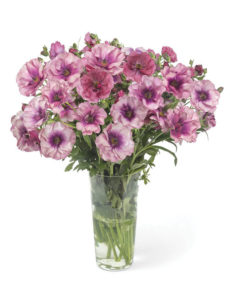
Ranunculus Butterfly is an interesting crop. Started from tissue culture, the root or corm looks like traditional ranunculus, but all comparison ends there. The plants require wider spacing, grow much taller, and produce sprays of single or double flowers with waxy petals. Cut stems can have a vase life of several weeks. These ranunculus are grown with wider spacing than traditional ranunculus — 12 inches on center.
Thiva is the new color introduced for this year, producing semi double lavender flowers on tall 24 to 30 inch stems. These specialty ranunculus are best grown in the protected environment of a greenhouse or high tunnel. The corms are produced from tissue culture in the Netherlands by Green Works and available from Ednie Flower Bulbs through distributor Ball Seed.
Scabiosa

New this year in the Scoop Scabiosa family is Bon Bon Scoop. Available in five colors, this series produces flowers with fully ball-shaped flowers, not the traditional scabiosa flower with a little tuft in the middle. Bon Bon Scoop is a great addition to the Scoop family. Like all the Scoop Scabiosa, these plants can reach a height of 48 inches and rebloom continuously throughout the season. One acre of Scoop Scabiosa can produce up to 250,000 stems in one season. Produced from tissue culture, rooted liners are available through the Ball Seed network of growers.
Several seed-grown crops have new color introductions this year in the celosia, lisianthus and snapdragon classes.
Celosia
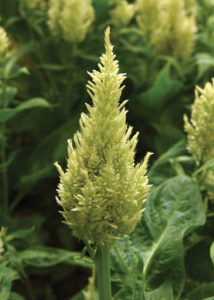
PanAmerican Seed adds a sought-after green color to its Sunday series of plume celosia. Best grown in a greenhouse or high tunnel, this productive celosia will produce multiple stems and grows up to 48 inches on a pinched or unpinched plant. ‘Sunday Green’ can be succession planted to produce a continual supply of flowers with excellent vase life all season. The larger-sized Sunday celosia flowers can be used as a focal flower, with the smaller side shoots used as filler flowers.
Dianthus
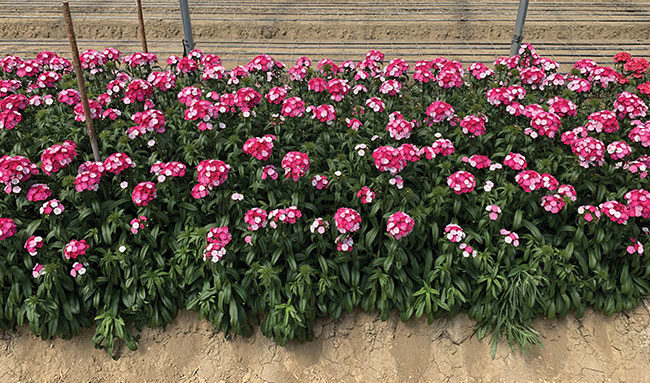
Another PanAmerican Seed addition is dianthus ‘Sweet Rose Magic’. Unlike the Sweet William from your grandmother’s garden, the Sweet series doesn’t need a vernalization period to bloom. This allows for scheduled plantings to target flower holidays like Valentine’s Day and Mother’s Day. These multicolored flowers change color as the plant matures. Each floret starts out white, changing to pink, and finally a rich rose color, creating a tricolor look to each flower. Sweet dianthus is a long-lasting flower that holds up well in mass market bouquets. Sweet is also well suited for local farmers market sales. Rose Magic is the 13th color in the Sweet Dianthus series.
Snapdragon
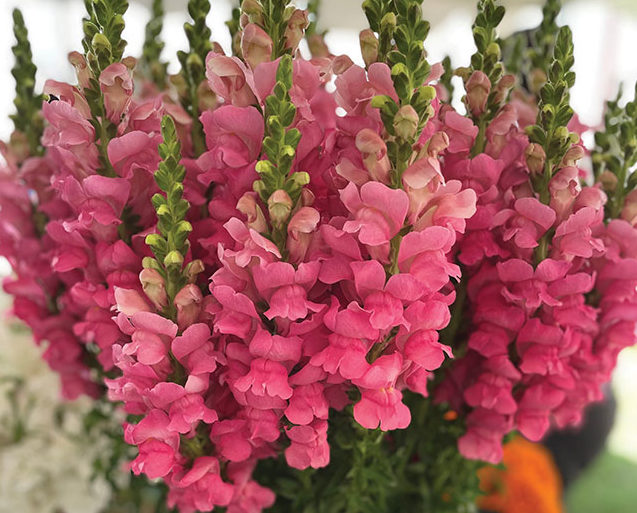
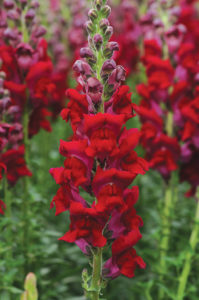
PanAmerican Seed has two new snapdragons for 2022. ‘Potomac Dark Pink’ is a summer-flowering variety that replaces’ Potomac Rose’. Dark Pink is faster to bloom than the Rose and is scheduled to bloom with the same crop time as the other Potomac snapdragons. The entire Potomac series works great in a tunnel or greenhouse, but also works well in field production.
The other new snapdragon is ‘Potomac Red Improved’ — a true red snapdragon for summer greenhouse or field production. Snapdragons are a standard cut flower crop that can be scheduled to bloom year-round by selecting the correct Group number in relation to the expected bloom time. Potomac Snapdragons are Group 3 or 3 to 4, and best suited for blooming during the longer, warmer days of Summer. The Potomac series now comprises 13 colors, providing a color for every occasion.
Lisianthus

New in the world of Lisianthus is ‘Arosa 3 Red’ and ‘Arosa 3 Deep Pink’ from the Japanese lisianthus breeder Sumika. ‘Arosa 3 Red’ is one of the few red lisianthus that is a true red. Arosa lisianthus produce multiple flowers on each stem, creating a full, lush look to bouquets. The flowers are a little smaller than most lisianthus but have the look and style of spray roses.
Also new from Sumika are ‘Celeb 2 Lavender’ and ‘Celeb 2 Apricot’ with large, double ruffled petals, and ‘Elegance 3 Snow’ with pure white flowers perfect for bridal bouquets. Sumika produces over 175 lisianthus varieties. First introduced to North America in 2020, Ball Seed is the exclusive distributor of Sumika lisianthus seed in North America. Plugs of Sumika lisianthus varieties are available from several plug producers.
Final Thoughts
Cut flower growers should always be looking for new variety introductions to add to the product mix. Being able to supply your market with the newest, improved varieties can help make you stand out in what can sometimes be a crowded market.
- The first step is selecting the right varieties to grow.
- Step two is growing the highest quality possible.
- Step three is making sure you sell what you grow.
Most people don’t think about it this way, but cut flower growers will never make any money growing cut flowers. All the income and profit is from selling cut flowers. What will you be adding to your crop list for a successful selling season?


 Video Library
Video Library 




















